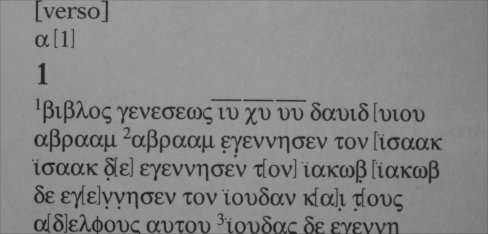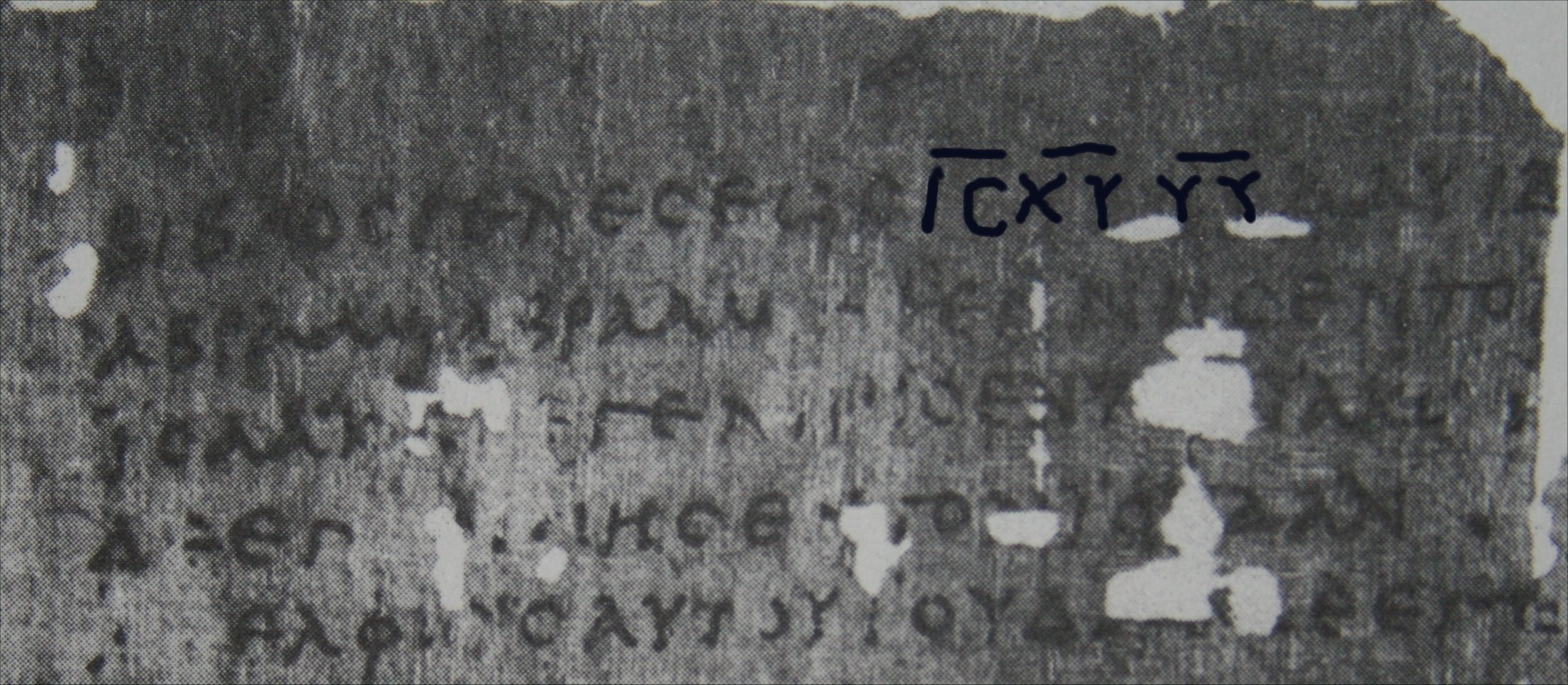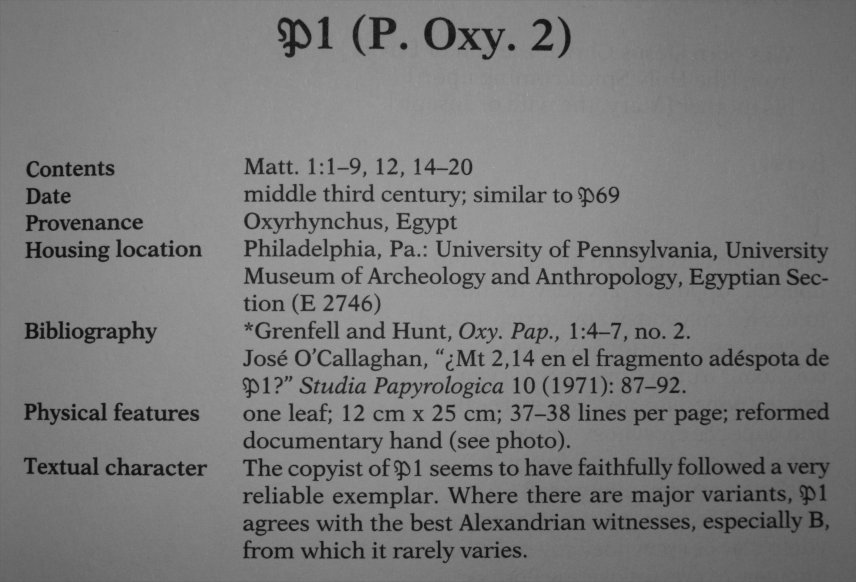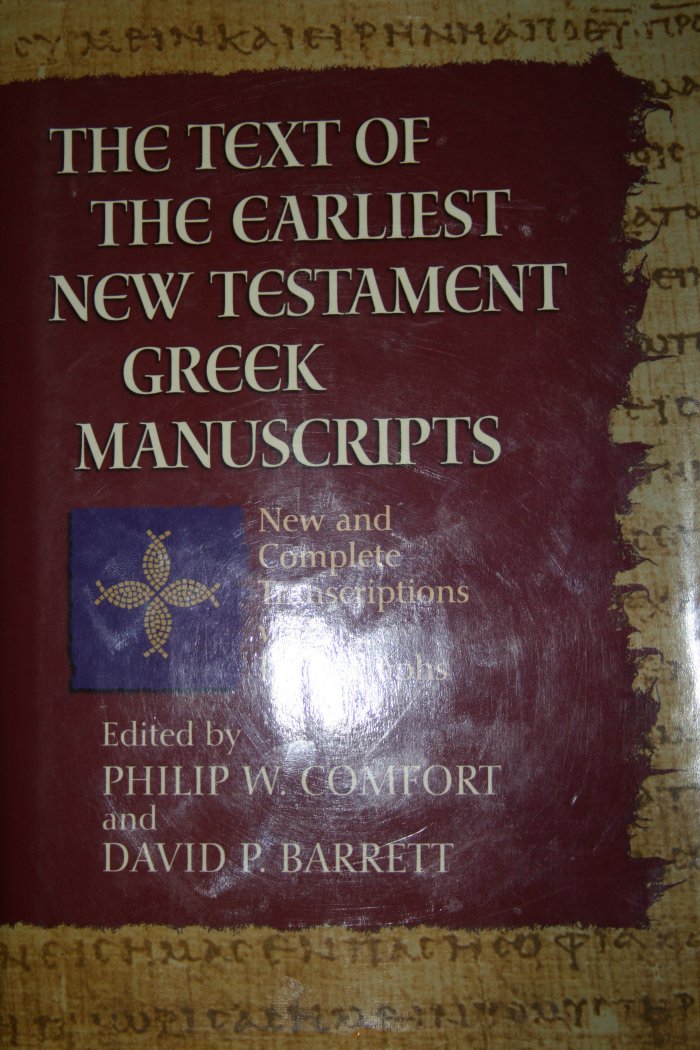
Below: a scholar's reconstruction of Matthew 1:1 from P1: Notice the over lines on on the abbreviations for Yeshua HaMashiakh and Son.

Below: a photo of P1, shown here with nomina sacra traced onto photo of MSS using ancient typeface. (The photo is hard to see because the publisher did not use a high resolution picture in the book. They do this on purpose to protect their hegemony on the archeological MSS. The tracing is located where the text has the nomina sacra. See scholars reconstruction above.

Information on the MSS, and where it is kept.

Source book. Notice the top right hand corner of the book photo? You can see the nomina sacra for Elohim and Father: qu prs. The sigma s is cut in half by my photo. (DF)

From my Galatians Commentary:
General Commentary (Text Marked†)
1.1 Yeshua†. Out of respect for the divine names and titles, the Jerusalem Church provided a mechanism to indicate that the original Hebrew was to be understood when reading the text. The original texts were all written in capital letters. Galatians 1:1 would look like this: paulos apostolos ouk ap anqrwpon oude Di anqrwou alla dia iu xu kai qu ps tou Egeirantos auton ek nekrwn. (DF)
There was no punctuation. There were no spaces between words, and the whole text was written in capital letters. (I have taken the liberty to print the text with spaces and to color the divine titles.) On the Greek line I have printed these like this: Ἱησοῦ iu Χριστοῦ xu θεοῦ qu πατρὸς ps
The first form of Greek, Ἱησοῦ, (DF) is from after the 4th century. Hence Ἱησοῦ does not appear in the original text. Only iu appears. This is composed of the first and last letters of the Greek word ihsou, which are equivalent to the modern letters. Ι=i, η=h, σ=s, ο=o, υ=u. (DF1). The Jerusalem Church decided that the middle letters, hso, would be dropped out and a line placed over the top of the remaining letters. The result was iu, the first and the last letters of the word. This is to indicate that the original Hebrew words would be read into the text, if the reader knew them. No Gentile or Greek would have understood how to deal with these names in the text without being taught what they meant. iu would be meaningless to the normal Greek speaker. Modern textual scholars call these "abbreviations" nomina sacra in Latin, or in plain English, "sacred names". They appear in all the early manuscripts. There are seven of these nomina sacra. They underlie the English names or titles: LORD, God, Father, Spirit, Son, Jesus, Christ. As indicated in the translation, they stand for the Hebrew names or titles supplied: LORD = יהוה or אֱדֹנָי, God = אֱלֹהִים, Father = אַב or אַבָּא, Spirit = רוּחַ, Son = בֵּן, Yeshua, Jesus = יֵשֹוּעַ or יְהוֹשֻׁעַ, Messiah, Christ = מָשִׁיחַ (DF)
These are represented in English: YHWH, Adonai, Elohim, Abba, Ruakh, Son, Yeshua, Mashiakh. The nomina sacra in the Greek texts indicate the divine status of the person whose name is so marked.
|